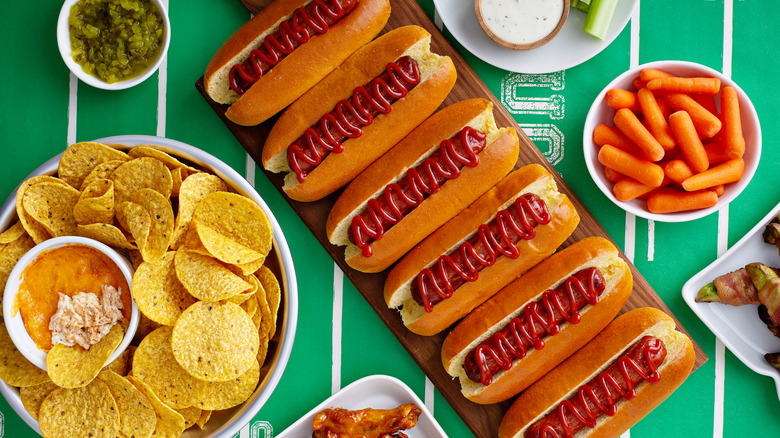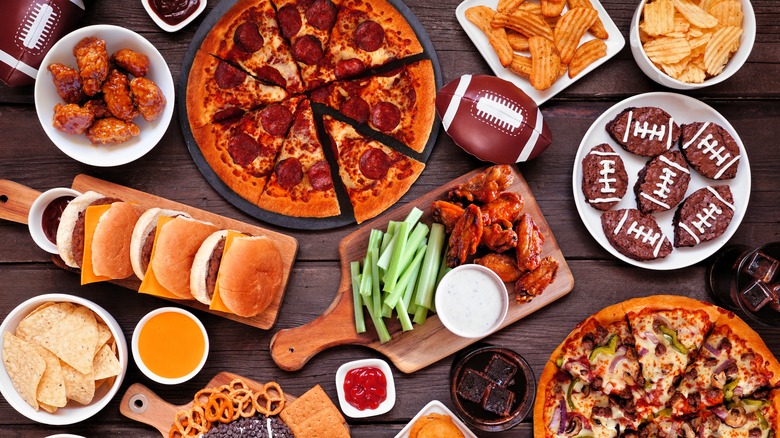Here's What's Going To Happen To All The Extra Food After Super Bowl 2023
After Thanksgiving, Super Bowl Sunday is the second biggest eating day in the United States. But what happens to the nachos left on the pan or those last few buffalo wings or that last bit of guacamole in the bottom of the bowl? In addition to being one of our biggest feast days, Super Bowl Sunday is also one of the nation's biggest food waste days. And that's saying a lot, because the U.S. is the world's number one food waster, according to Statista. As of 2011, the average American wasted more than 1,500 calories a day, or nearly enough to sustain another person at the full recommended 2,000-calorie-a-day diet.
While we all have to follow tips for reducing food waste at home to reduce Super Bowls Sunday's environmental impact, some major steps have been taken this year to reduce food waste at the stadium (per CNN).
Super Bowl Sunday gives back
While generally speaking, 61% of food waste comes from households, the Super Bowl generates a startling amount of food waste in a commercial setting (per World Economic Forum). According to The Counter, 40,000 pounds of food was estimated to be wasted at the 2020 Super Bowl. That's roughly enough food to feed 21 people for an entire year (per Calorie Bee). 2020 was also the first year something was done about all that food waste.
Charitable organization the Food Recovery Network (FRN) will be collecting excess food from Super Bowl LVI, their third Super Bowl (per CNN). This year, FRN plans to reclaim 3,000 pounds of food from the "Players Tailgate" party portion of the event alone. Transporting the food proves to be a challenge for the student volunteers who staff the program. This year, they'll be using refrigerated trucks to help move food before it spoils, but the window is narrow. The group has two hours to relocate the food from the "Players Tailgate." Last year, this required the group to Tetris in important proteins like meat and seafood, which are also highly perishable, last so that they could be the first out of the trucks when the food was delivered.
It's not just prepared foods that are finding their way to the food insecure thanks to FRN, unused prep ingredients like cheese, eggs, and butter, as well as pickles, condiments, and even ice cream have made their way to food banks thanks to the group.

